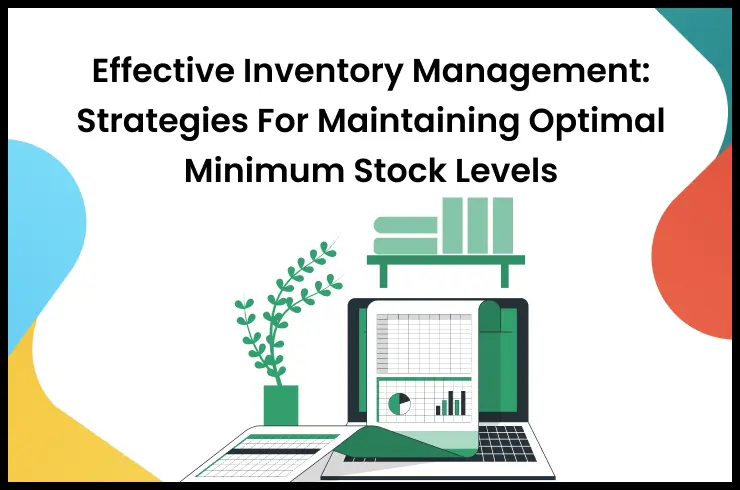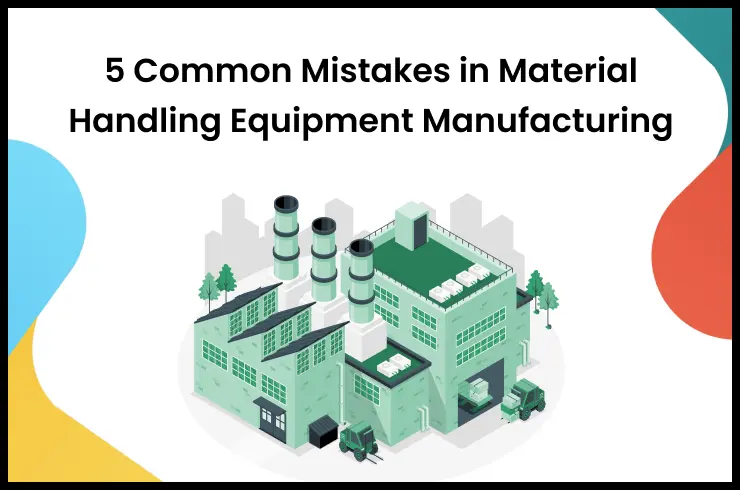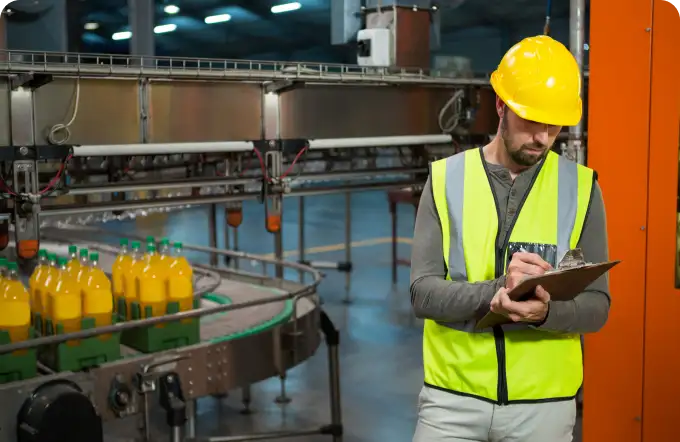Batch manufacturing records (BMR) are a popular means of recording the complete production process from start to finish for a variety of manufacturers including medicinal, pharmaceutical, and other businesses. Such manufacturers are under coherent supervision by government agencies and other regulatory bodies and are required to maintain the quality of the drugs and medicines for consumers.
Any negligence or mistakes can have adverse effects on the consumers. To avoid such scenarios batch manufacturing records play an important role. Let's see how.
What Is a Batch?
A batch refers to the defined quantity of drugs, materials, or other resources produced during a cycle of production by the manufacturing company within limits established by the manufacturing unit capacity.
A batch must comply with industry standards, have unique characteristics and quality, and produce homogeneous products. A unique number allotted during production must be recorded during single or multiple production orders.
Example- If a company is producing 10,000 pills of a specific medicine, the entire batch of 10,000 medicine units must be identical in the ingredients, processes involved, and other crucial aspects.
What Are Batch Manufacturing Records?
A batch manufacturing record is a written and validated narration of the end-to-end manufacturing process. It includes the records of production, instructions on how to manufacture a product, quality control measures, the procedures involved, inspection reports, and the report on the outcome.
It is a crucial process as it can affect consumers immensely. The data is collected to determine whether the organization or production house maintains and abides by the regulations and safety standards established by the regulatory bodies. These regulations are vital, especially for companies dealing in consumable goods involving ingestion and application on the body.
Examples of such industries include pharmaceuticals, personal care, body products like shampoo, conditioners, and shampoos, nutritional supplements, and packaged goods.
Regulatory bodies use BMRs to keep a check on data like ingredients and their handling, proper clearance and competence of the employees and employers, quality control, the efficiency of well-equipped and technologically advanced equipment and machinery, and more.
Importance of Batch Manufacturing Records
Batch manufacturing records involve detailed analysis and management of the data and records produced during the step-by-step manufacturing processes of a company. It tracks the raw materials involved and the mixing, blending, assembling, and packaging processes.
The importance of batch processing in manufacturing is listed below:
Improvement in communication
Batch records allow various departments, like production management, quality control, and inventory, to communicate to ensure that the end product meets the required standards.
Establishes product quality standards
For example, BMR in pharmaceutical industry maintains the entire production cycle records through a step-by-step guide. This information is further used to define the quality standards for the product.
Improvement in product safety standards
Producers have detailed evidence of the batch manufacturing records via batch manufacturing methods to identify and document the products that may have contamination or are simply unfit and unsafe for consumption.
Inculcates efficiency
BMR has proven to be a great mechanism for producers and manufacturers to optimize production processes, reduce the effort required in the outcome, and streamline production via automation of data entry, document retrieval, and tools and equipment readings.
Increase in accuracy and reduce waste
BMR tracking efficiently boosts product quality and reduces waste through unit-of-measure conversations, equipment amalgamation and integration with other departments, and real-time data updating. It eliminates the risks of human error or bias.
Company-wide integration
The company can manage its multiple departments and operations by integrating BMR with an ERP system. It optimizes accessibility and highlights errors or difficulties without fail.
Optimized reporting
Batch reporting uses built-in automated reporting, analytics, and performance-checking modules that produce accurate results and streamline reporting.
Types of Batch Manufacturing Records
There are various batch manufacturing records available for companies with different functions, and they differ in functionality, scope, and goals. Some of the types of batch manufacturing records are discussed below:
1. Validation Batch Records: These offer instructions and guidance on the validation process and record the results produced in the process.
2. Quality Control Batch Records: These records are capable of offering directions for product testing and recording the test outcomes.
3. Production Batch Records: It is the subset of BMR. It involves tracking and documenting results about the production processes like personnel, equipment settings, classifications of machinery involved, and packaging.
4. Master Batch Record: The highest-level batch record outlines all the steps involved in product manufacturing, steps, and processes. It offers detailed descriptions, manufacturing processes, and instructions for the processes involved. It also serves as a template for batch packaging records (BPRs) and BMRs.
5. Packaging Batch Records: Packaging batch records offer crucial packaging instructions and document and maintain the outcomes of the process.
What Is Included in a Batch Manufacturing Record?
Batch manufacturing records include a variety of credentials and documentation like the operator's name, product name and type, batch number, quantities, ingredients, storage conditions, packaging, and batch yield used in the process.
The master formula record (MFR) works simultaneously with BMR to manufacture a standard size, raw materials, and other process requirements. The difference between BMR and MFR is minute. MFR describes how the product is manufactured and what components are needed whereas, BMR describes the instructions to document the process and describes what is ultimately produced.
BMR is a properly structured record containing crucial details and information in every product batch. Some of the key details included in BMR include:
Documentation of important dates
It includes the key details on the beginning of the batch and the end dates. It also includes other necessary milestone dates that allow the businesses to check the schedules and ensure that the deadlines are being appropriately met.
Bill of Material
BOM, or Bill of Material, is an instruction guide that focuses on raw materials utilized in the production process in the batch, including ingredients and packaging components. The key is to take into account that every component adheres to the batch criteria and is safe for consumption and usage.
Hazards and potential issues
Batch manufacturing record in the pharmaceutical industry is specifically important because pharmaceutical companies are not away from potential man-made errors and hazards that may halt the process. It is necessary that the issues are detected earlier during the process of production and handled accordingly.
Manufacturing process
This step is important as it documents the changes in real-time and summarizes the actions taken to complete the batch production from beginning to end. The system alerts the manufacturer whenever an operation different from the casual mechanism is detected with the batch.
Compliance records
This includes the approval signatures and the materials from the third-party regulatory and testing bodies that define the authenticity of the batch production.
Information on batch
Batch identification number, amount, and name are some of the crucial details that improve the readability, traceability, and flow of production.
Maintenance and regulatory guidelines
It is necessary to record the operations conducted for maintenance, renewal, or improvement in performance, dates, and persons involved in maintenance. It allows the companies to stay vigilant toward similar concerns in the future.
Characteristic and quality control
This step is an instruction guide on the recommendations on the type and number of tests to be conducted for the product, the differences and concerns faced, and other related findings on the product or medication.
Equipment and tools Involved
The pharmaceutical or manufacturing company must devise a comprehensive list of the tools, equipment, and machinery involved in the process. It ensures that updated and technologically capable, and advanced tools are used in the process.
Requirements of Batch Manufacturing Records
Batch manufacturing records are an important source for companies to have evidence about the safety standards of the products they are producing and the quality of the machinery involved in the process. They help companies to identify the issues early on, make necessary changes, and regulate production.
There are many requirements like audit reports and regulations for BMR based on the products and industry. These regulations must be maintained up to date, stored carefully, and made accessible as they can help companies during legal matters as well.
Some of the requirements are listed below:
Regulatory requirements
These requirements include all the crucial information required and tracked during batch production. It involves a quality checking representative to check and sign the batch records based on the ingredients, active raw materials, control measures, and security measures undertaken by the company.
It is the responsibility of the operator to ensure that the integrity of the data is maintained, it is stored carefully, and updated regularly. The regulatory committees and bodies have strict guidelines and instructions to protect the consumers and push the manufacturers to maintain high work ethics to provide the best resources, facilities, and products.
Data integration
To successfully streamline the data management under BMR, operators in different departments must interact with the tools and instruments and optimize data collection from different sources to provide the necessary inputs for crucial data processing.
Auditing requirements
The auditing requirements may vary from one industry to another. It engages with the processes involved in verifying, collecting, and administering the milestones and logs achieved during the production of a single batch during a stipulated period.
Keep note that the following areas of measurement are generally included in an auditing report:
- Review of active agents and raw materials and their effect on the test results and diagnostic reports of the final product.
- Review of the tests conducted on the product, like sterility reports, release reports, certificates of diagnosis, and other vital reports.
- Review of production parameters like equipment settings, types of machinery, instrument diagnostic, and analysis readings.
- Review of the final product with the test results.
- Check the authenticity of the batch records results and compare them to the previous production batch or the level of efficiency during production.
Benefits of Using Software Solutions for Batch Manufacturing Records
It is not convenient for companies to use manual inputs or methods to document batch reports and spreadsheets. It can lead to mistakes by people, can be overwhelming, and is time-consuming. It can ultimately cause the companies to fall behind the compliance regulations given by the regulatory agencies and incur penalties on the companies.
ERP software is a perfect solution to keep the data up to date, and intact and streamline the operations within various departments like marketing, sales, production, and inventory.
Here are some of the key advantages of employing software focused on BMR:
Real-Time Updates
The manufacturers can record the alterations and changes in BMRs, MFRs, inventory, processes, and formulas involved instantly with BMR integrated with ERP software in real-time.
Improvement in Reporting
ERP software associated with batch manufacturing records maintain regular reports and improve performance tracking and production quality. The manufacturing units do not need to fear the ill effects of inadequate reporting and focus on consumer safety and trust in the product. The in-built report and statistical analysis simplify the batch reports and maintain accurate data.
Lower Production Costs
By streamlining reporting with BMR, organizations can eliminate the costs of overproduction of goods and comply with market demands with optimal utilization of resources. This helps to increase business profits and maintain the budget in the long run.
Provides Traceability
It improves the traceability of the products back to the original path, to their original raw materials and the types of equipment to produce the same product in the future. The operators and the people involved in production gain an audit trail of all the products developed.
Data Crucial for Decision Making
The software produces accurate data that provides an in-depth and complete overview of the batch production schedules, manages quality-control tests, and verifies the quality time, which enhances the decision-making abilities of the people involved in production.
Compliance with Regulations
Multiple industries benefit immensely due to the ease of managing the various elements of regulations like organization, data collection, raising inefficiencies with the system, and reporting to the designated authorities. The organizations can benefit as they reduce the possibilities of penalties and additional costs incurred due to mismanagement.
Multi-Use Capabilities
BMR improves the capabilities of the companies and allows them to develop more products during the same batch production. This is performed via the proper utilization of equipment and tools and optimizing their capabilities properly during production.
It improves the abilities of the manufacturing units to adapt efficiently to the demand and supply and not be absorbed in the production of a single good. It also fosters flexibility to make a variety of products with the same instruments and tools and modify the existing products as and when required.
How to Select the Best BMR Software?
Businesses must analyze their mode of operation, the equipment and instruments involved, and the type of products produced to choose the right software.
A vast majority of the BMR software is involved with discrete manufacturing based on the simple assembly of product parts and cannot handle complex functionalities and modes of conduct associated with pharmaceutical and chemical industries.
Chemical or medical industries require management with calculations, formulas, and real-time detection of an error, which may require BMR specifically developed to meet these unique needs.
The best solution is to look for a vendor who has a long history with pharmaceutical companies and has the right software to adapt to the changing market trends and companies' unique needs.
Here is the comprehensive list of the features required to prepare batch manufacturing records in the required industries:
Industry-Specific Compliance Regulations
To meet the unique needs of chemical and pharmaceutical companies, it is key to find ERP systems with BMR software that comprise unique and specific instruments for data collection, an organization to meet the industry standards.
Integration With Multiple Instruments
Specialized BMRs connect with equipment like thermometers, sensors, and measurement units to maintain accurate readings of pressure, weight, mass, and temperature accurately. It enhances the efficiency as the operator does not need to manually enter the data every time, saving time and energy.
Quality Control
Quality management is key to producing high-quality and hygienic products for customers, ensuring a consistent value and reputation for the company. You can have control of product surveillance, track errors, and trace back the reason for inefficacies.
Mobile Capabilities of BMRs
Digitalization is crucial to access batch performance and recording everything. The mobile integration of BMRs allows the operators to access remotely, involve people virtually to discuss, and check stock changes effectively.
Conversions of Units of Measurement
Chemical industries require vigilant software capable of changing units of measurement into the required base units required to track inventory changes effortlessly. A capable specialized system provides accurate and genuine data conversions, statistics, analytics, and information on prices, quantities, and formulas involved in the process.
Dynamic Fields, Expansion, and Scaling
A capable system allows the companies to scale up production and produce more with the same utilities and equipment. It avoids underutilization of resources, undertakes the required product changes as and when required, and produces optimum results. It must connect data recorded and collected in previous steps to the newer steps, produce accurate results and compare the production cycle regularly to detect inconsistencies.
Presence of Specialized Management Records Systems
BMR systems also involve other important systems like the validation batch records, production batch records, quality control batch records, master batch records, and packaging batch records to produce high-quality products, check and verify authentication and quality, and package the bulk finished products in required forms like capsules, pills, and tablets.
Guide and Recommendations for Authentication
BMR provides a step-by-step guide on how to carry out production. BMR software duplicates the master formula record, auto-populates guidelines, and audit trails sign-offs and authorizations for steps requiring twofold identity verification. It is crucial to eliminate the possibility of errors or penalties in the case of incoherence by the companies.
Security and Audit Management
BMR systems developed for pharmaceutical companies are well acquainted with the sensitivity of the processes involved with consumer personal usage products. It offers an audit trail, secure control of authorized people on sanitization and calculations, and divides role-based permissions and dual verifications processes to ensure that the data is regulated by the right person.
7 Best Practices for Batch Manufacturing Records
A batch manufacturing record is crucial to maintain consistent product quality and holding customers' trust in the company. A production process is easy to track and review with BMR, document every step, and make necessary improvements as the production progresses. It can prove to be excellent for manufacturers to scale up their business and provide flexible capabilities.
You can follow the below-mentioned best practices to develop and maintain batch manufacturing records as required for the company:
1. Define the step-by-step production
Maintain the in-depth steps involved in a production, like equipment list, types, active agents, resources, and personnel, crucial to the process.
2. Keep records of production capacity
This report tracks the products and the issues and hazards caused during the process. It can help the manufacturer to make the changes quickly through the process.
3. Use standardized formats
It is crucial to use standard and generalized formats for consistency, better maintenance of records, and ensuring that the records are genuine, up-to-date, and complete.
4. Monitoring production costs
BMR systems must be used to keep a regular check on the cost-to-investment ratio and ensure that the production costs are economical. They must be able to curb unnecessary production capabilities like outdated technology, machinery, and tools, enabling the companies to be cost-efficient.
5. Follow excellent documentation practices
Make sure to stay aligned with the required documentation practices involved in the process. It optimizes accuracy and eliminates the potential for legal errors, and streamlines production.
6. Track raw materials supply
The companies must track the active ingredients in the production to ensure that there are enough resources and materials readily available in need. It is important to ensure that production does not stop due to the lack of raw materials.
7. Monitor the instrument efficiency
The batch production depends on the efficiency of the types of equipment. It maintains the consistency of products and produces the best products for consumers.
BMR is necessary to produce the best results for the pharmaceutical and medical industries. It forms the foundation for consistent products developed within the regulations and production of safe and secure products. Adopt the best software integrating diverse functions to ensure seamless maintenance of BMRs for your business!
FAQs on Batch Manufacturing Records
1. What is a batch record?
It is a detailed instruction for the manufacturing process of the product including equipment, materials, and people involved.
2. What is the difference between a batch record and a batch manufacturing record?
A batch record is a document that contains information about a specific batch of a product, such as the batch number, manufacturing date, equipment used, raw materials, and procedures followed during production. On the other hand, a batch manufacturing record (BMR) is a specific type of batch record that focuses on the manufacturing process itself. It includes detailed instructions for each step of the process, raw materials, and personnel.
3. What is a deviation in a batch record?
It is a departure or non-conformity from standard guidelines resulting in inefficiencies in production and hampering product quality.
4. What is the role of BMRs in GMP compliance?
In Good Manufacturing Practices (GMP) compliance, batch manufacturing records (BMRs) play an important role in ensuring that the manufacturing process is properly reviewed, documented, controlled, and validated.
5. What are BMR and BPR in pharma?
BMR or batch manufacturing record is a document that contains all the instructions required to manufacture a specific batch of a pharmaceutical product. BPR or batch packaging record includes information for the production process and its analysis for a certain batch of a pharmaceutical product.
6. What happens if BMRs are incomplete or inaccurate?
It can lead to data errors and quality issues in the final product and can also incur penalties for the company for noncompliance with regulations.
7. How long should BMRs be retained?
The records must be retained for up to one year of batch production completion.
8. What is the purpose of in-process testing in BMRs?
It performs testing during production to analyze the process and make improvements and adjustments to ensure active regulation of production.
9. What is the purpose of finished product testing in BMRs?
The purpose is to ensure that the finished product complies with the regulations and records the problems that arose during production.
10. How can BMRs be standardized across batches?
BMR's system can be connected with ERP software to streamline batches by including start and end dates, materials and equipment involved, and step-by-step documentation of the process.
11. Who is responsible for creating BMRs?
The quality assurance designer and the relevant team looking into the batch packaging record are responsible for BMRs review and draft.
12. What should be included in the batch manufacturing record?
BMR systems include batch number, name, date, raw materials, quantities, packaging details, storage conditions, and expiration.
13. What are examples of manufacturing records?
Manufacturing records include raw data, test results, batch records, deviations, bills of materials, and certificates of analysis.
















